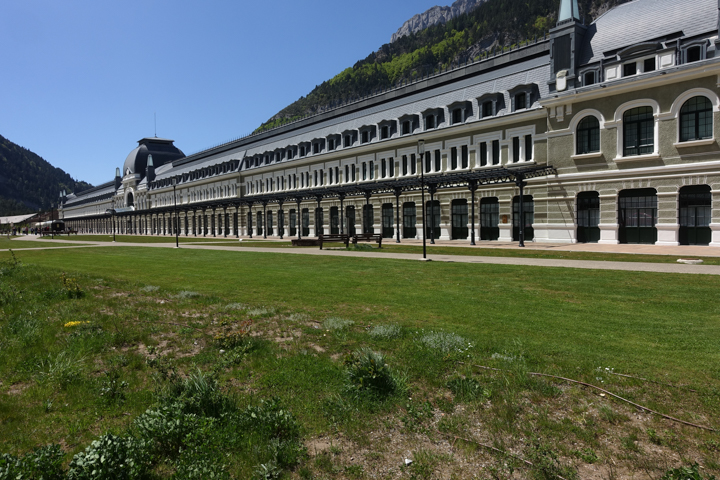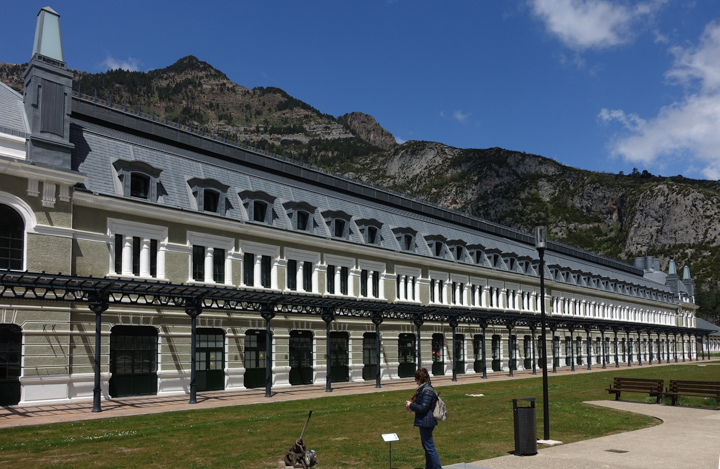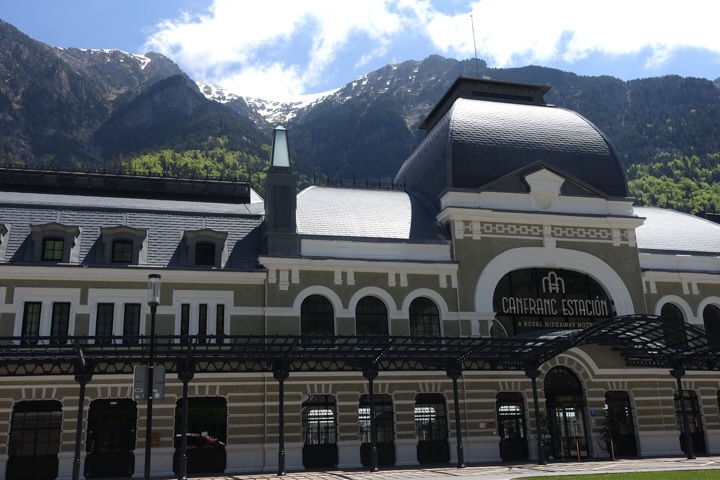Canfranc International Train Station
In the early 1900s there were two railroad lines between France and Spain, both crossing the Pyrenees mountains. As the demand for railroad services increased — mostly for freight but with a fair amount pf passenger traffic — the French and Spanish governments decided to build a third line between their countries and funded the construction of this line that went through Canfranc.
At some point on that line the trains had to stop, as passengers and cargo had to be transferred from French trains to Spanish or vice-versa, because the trains of one country could not operate on the tracks of the other country. This meant a station would have to be built somewhere near the France-Spanish border, and the choice was near the village of Canfranc, about 20 miles south of where the trains would cross the border. The Spanish government, under King Alphonse XIII, decided to build a showpiece of a station to reflect Spain’s prominence in architecture and construction. So was built the Canfranc International Rail Station, 620 ft long and the second largest building in Europe at the time of its 1928 opening. It is mind-boggling:


It has been little-used in its history. At its peak in the 1930s, probably no more than four or five passenger trains a day stopped here. During the Spanish Civil War (1936-1939) Generalissimo Franco sealed the 5-mile long Somport Railway Tunnel just north of Canfranc, fearful of arms smuggling to his opponents. The tunnel was re-opened after the war and operated until 1970, when a fire on the French side of the railroad line burned a bridge and the French government decided not to rebuild it. Since then, there have been sporadic services between Canfranc and Zaragoza, 110 miles to the south.

Recently, after years of decline and disrepair, the building has been converted to a 5-star hotel. Much of the railroad infrastructure around the station has been removed and replaced by lawns and walks. Its site is beautiful, nestled in a valley of the Pyrenees. Still, I can’t imagine that it draws many visitors. At the Officina de Tourism we asked about the Zaragoza train services and were told that it was a three-hour train ride through some beautiful areas, but that repairs had stopped the trains and much of that journey to and from Zaragoza was on a bus. When I asked how long the repairs had stopped the services, the response was, “Two years, with no date for finishing them.” Maybe train service to Canfranc isn’t the highest priority of the Spanish rail system.
We stopped in a local restaurant and had a beer and some raciones to fortify us for our drive to Pau. The drive through the Pyrenees is beautiful and we were very happy to have stopped to see this architectural wonder.